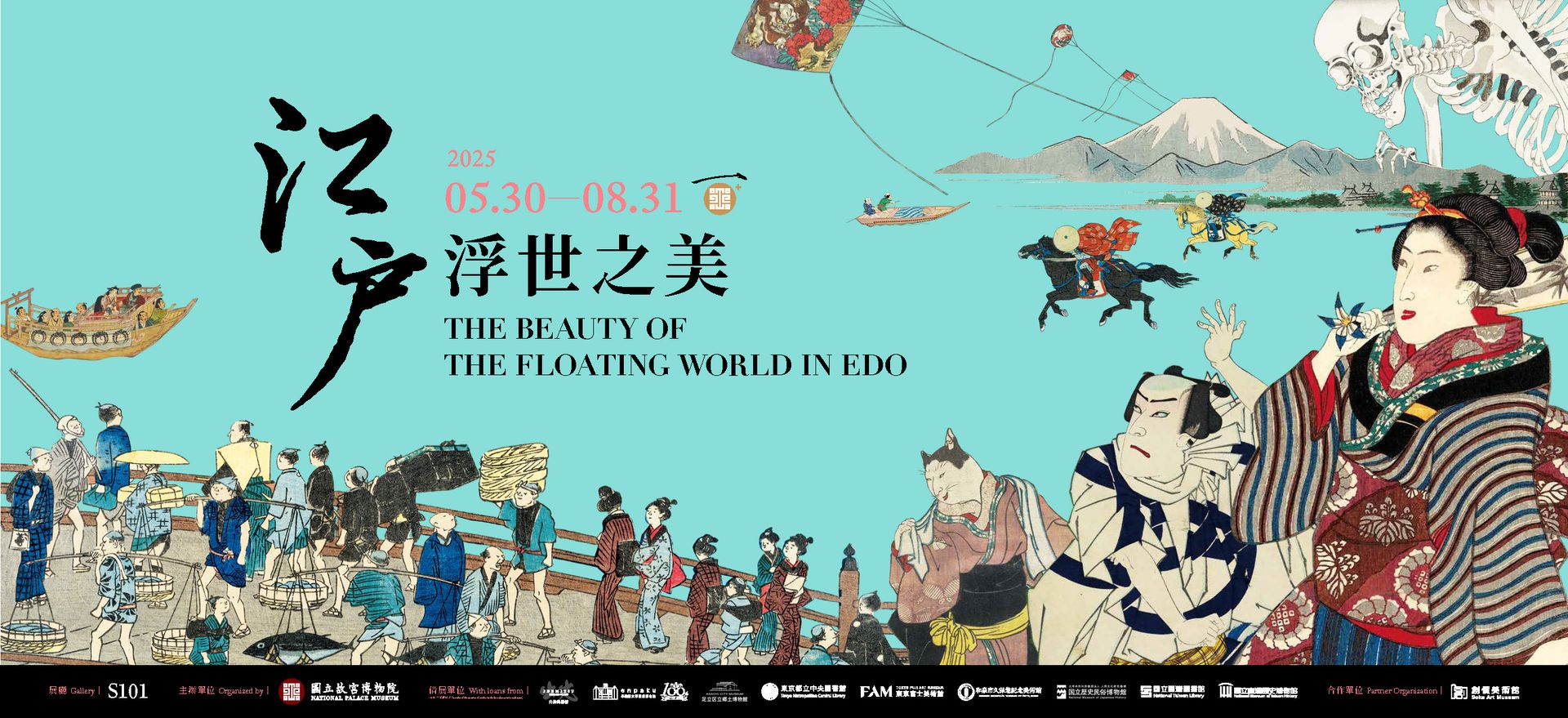The Joy of Travel
In the 19th century, as Edo’s citizens achieved economic prosperity, travel became an important pastime. The craze for tourism brought with it a surge in the popularity of landscape-themed woodblock prints. This section continues by showcasing two renowned editions of Utagawa Hiroshige’s The Fifty-Three Stations of the Tōkaidō—the Hōeidō edition and the Reisho edition. The differences between the two editions’ formats give museum visitors varied viewpoints from which to appreciate Utagawa’s artwork, while also lending insight into Edo’s history as one of Japan’s cultural centers. Additionally, this section presents European travelogues that show how Edo was remembered by the westerners who saw it with their own eyes, further revealing people’s impressions of Edo around the world.
-
53 Stations of the Tokaido: Nihonbashi (Hoeido Edition)
c. 1833
Utagawa Hiroshige
Adachi City MuseumAs the morning sun begins to rise, it gently bathes the city streets in a soft reddish glow. The wooden gates on both sides in the foreground swing open, perfectly welcoming a brand-new day. On the bridge, two men carrying red-lacquered boxes on their shoulders walk toward the viewer, followed closely by a procession bearing spears with tufted heads. Judging by the formation, it is likely a feudal lord (daimyo) preparing to depart the city and return to his domain. A fish vendor, originally walking at the front, steps aside along with others to yield the main road for the officials to pass. Next to the vendor hangs a notice board displaying proclamations and prohibitions issued by the shogunate, setting rules for daily life in Edo. Amusingly, only a dog walking in the opposite direction seems exempt from these restrictions, adding a touch of unexpected humor to the city's bustling morning routine.
-
Fifty-three Stations on the Tokaido: Illustrated Book of Ekiro-no-Suzu
1810
Katsushika Hokusai
Tokyo Fuji Art MuseumCompared to Hiroshige, who emphasized landscapes to highlight the characteristics of each station along the Tōkaidō, Hokusai instead used figures and human interactions to connect various locations.
For example, in the Shinagawa-juku (品川宿) scene, the composition features courtesans interacting indoors, while the expansive sea view outside the window subtly suggests Shinagawa's coastal geography. In the far distance beyond the shoreline, Mount Fuji can also be seen, reinforcing the sense of place.
According to the Edo customs record Morisada Mankō (守貞謾稿), Shinagawa-juku employed a large number of "Morimeshi Onna" (盛飯女, lit. 'rice-serving women'). These women were originally waitresses at hatago (旅籠, traditional inns) or dining establishments, responsible for serving rice and side dishes—similar to modern-day restaurant servers. However, in Shinagawa-juku, many of these "rice-serving women" were in fact engaged in sex work, reflecting the region's unique social and cultural landscape.


